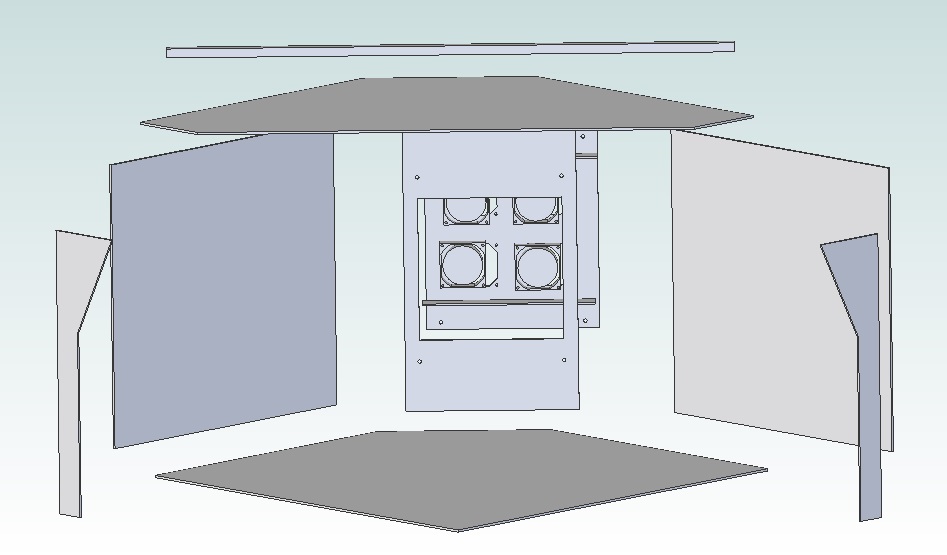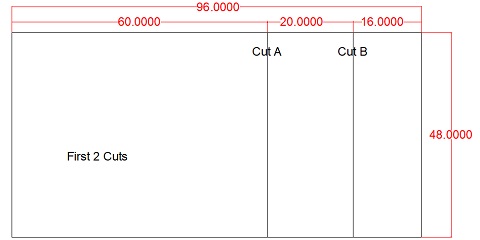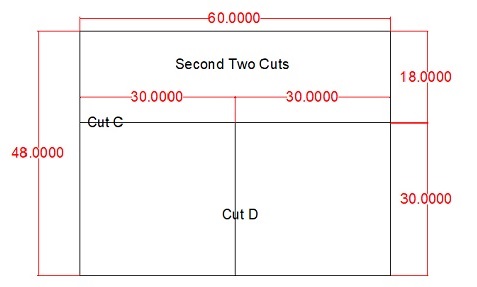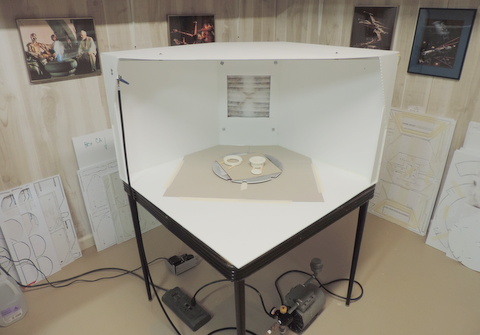
Spray booth on top of card table.
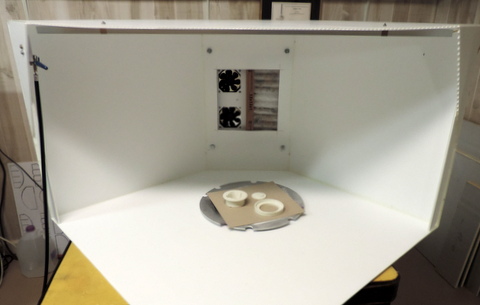
Close up of booth, filter partially slid out to show fan bay.
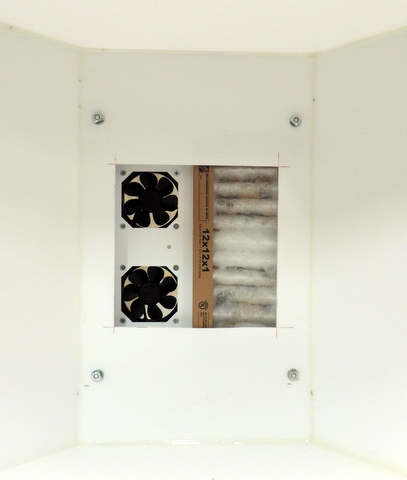
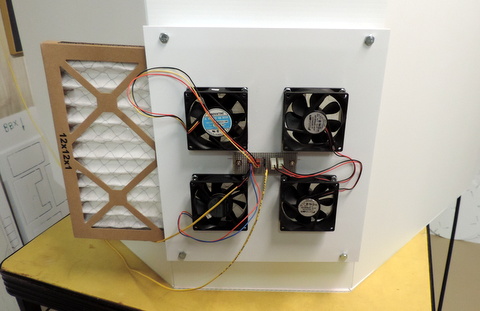
Above: rear of spray booth showing fan bay and filter.
If needed a shroud could be bolted onto the rear of the fan bay to allow feeding the exhaust to a hose and external vent.
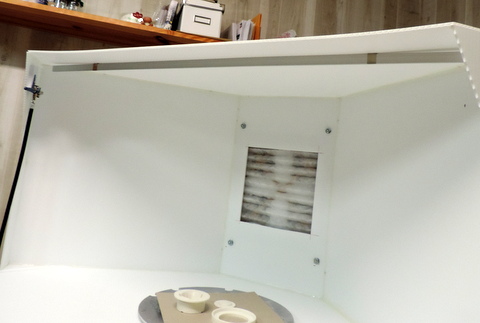
Showing light bar mounted at front of top edge.
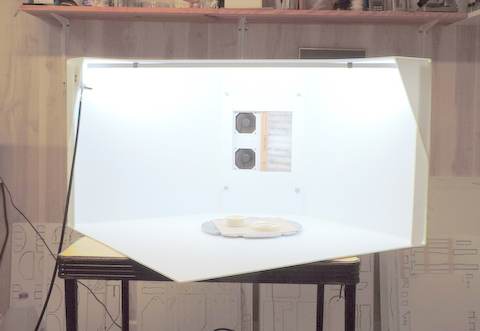
Light Bar lit up, brightness tends to wash out other details.
